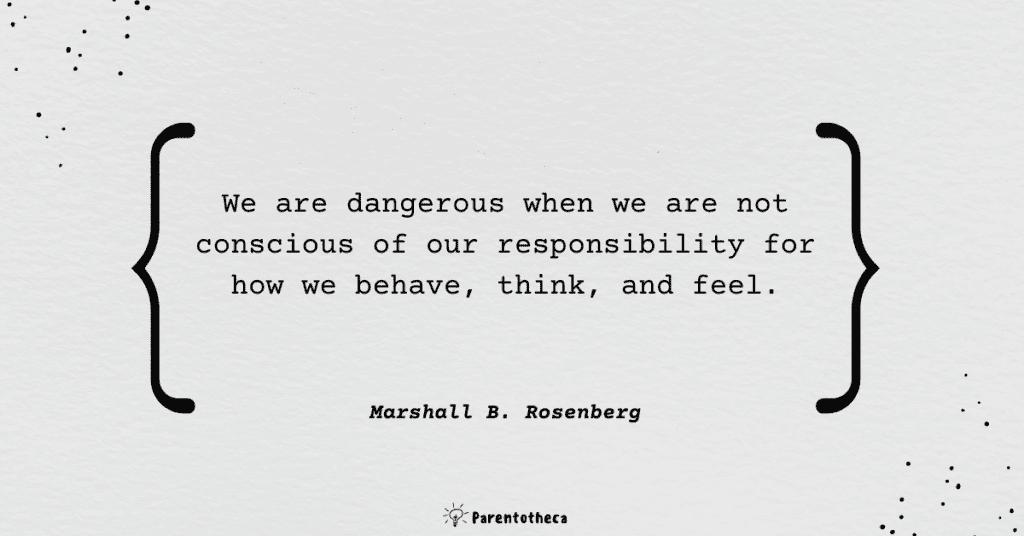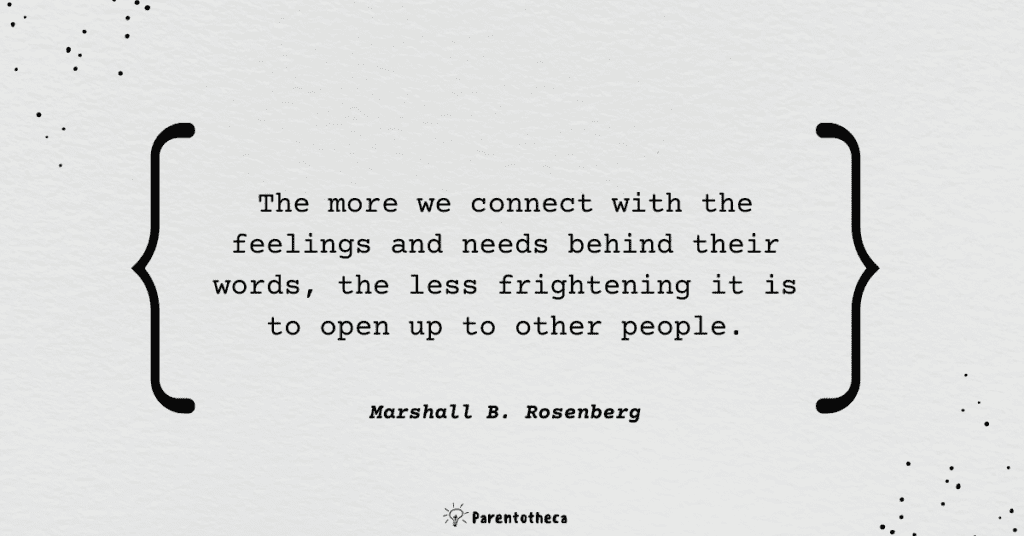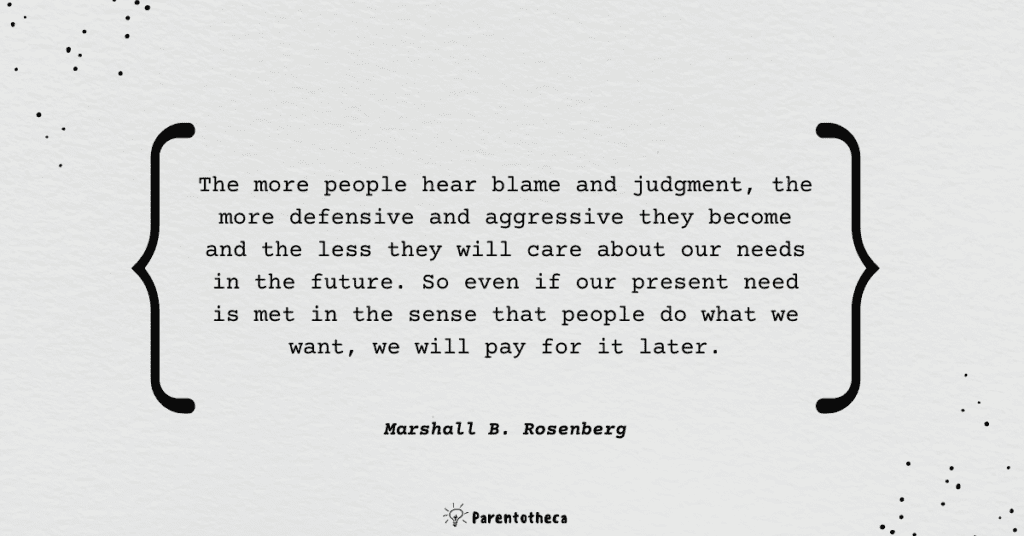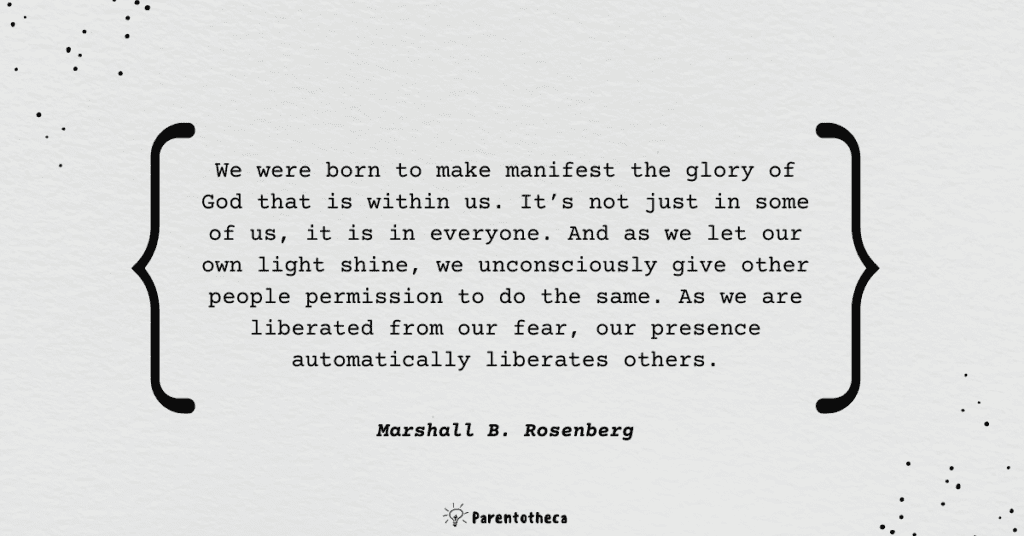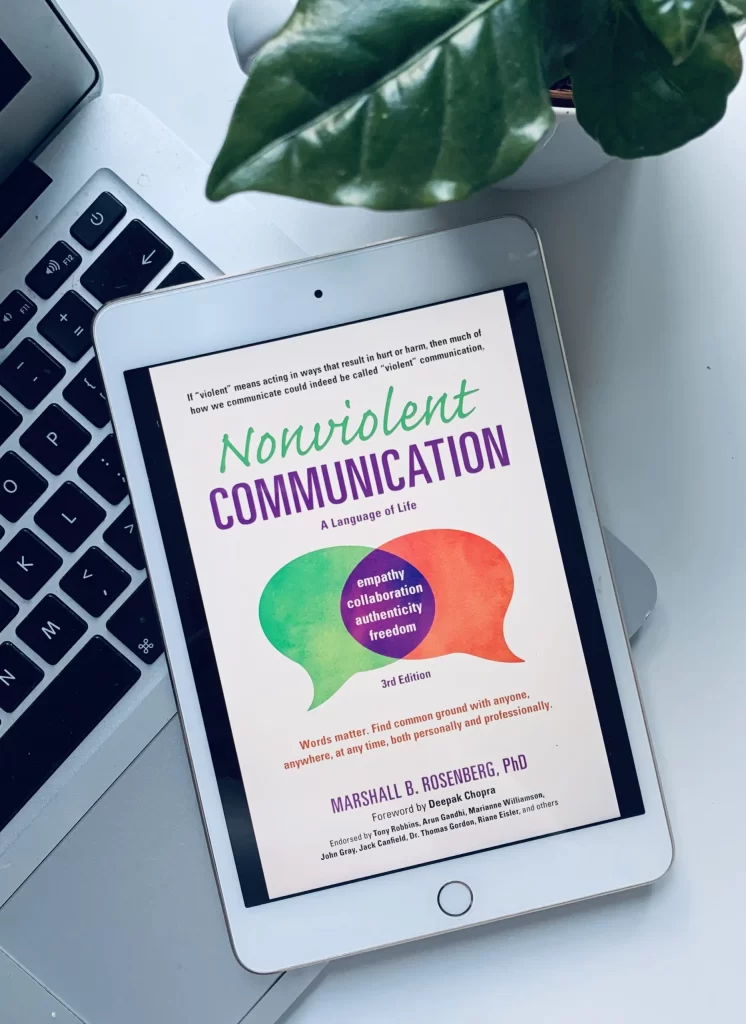 Nonviolent Communication – Book Summary
Nonviolent Communication – Book Summary
A Language of Life
Marshall B. Rosenberg
Puddle Dancer Press (US); 3rd ed. edition (1 Sept. 2015)
About the author
Marshall Bertram Rosenberg (October 6, 1934 – February 7, 2015) was an American psychologist, mediator, author and teacher. Starting in the early 1960s, he developed nonviolent communication, a process for supporting partnership and resolving conflict within people, in relationships, and in society. He worked worldwide as a peacemaker and in 1984, founded the Center for Nonviolent Communication, an international nonprofit organization for which he served as Director of Educational Services. During his life he authored fifteen books, including the bestselling Nonviolent Communication: A Language of Life, which has sold more than one million copies worldwide and has been translated into more than 30 languages, with more translations in the works.
About the book:
“While studying the factors that affect our ability to stay compassionate, I was struck by the crucial role of language and our use of words. I have since identified a specific approach to communicating—both speaking and listening—that leads us to give from the heart, connecting us with ourselves and with each other in a way that allows our natural compassion to flourish. I call this approach Nonviolent Communication, using the term nonviolence as Gandhi used it—to refer to our natural state of compassion when violence has subsided from the heart. While we may not consider the way we talk “violent”, words often lead to hurt and pain, whether for others or ourselves.”
Over 5,000,000 copies of this book sold worldwide…because, as it’s stated on the cover, it really works. Based on Gandhi’s idea of nonviolence, Nonviolent Communication (NVC) is also known as “Compassionate Communication.” NVC is an extraordinary tool, and I personally think this book should be mandatory reading for every human being. Especially parents.
So if you are looking for a book to get some practical ideas on how to improve your communication skills (or get your kids to listen to you ☺), Nonviolent Communication is the one.
This book had a significant influence on many leaders. For example, Satya Nadella’s time as CEO at Microsoft was initially shaped by Rosenberg’s ideas in Nonviolent Communication, which he asked all of his top executives to read.
In these notes, we’ll cover just the core ideas from the book, but definitely grab the book for more. It is brilliant. Let’s jump straight in.
Key Insights:
What is Nonviolent Communication (NVC)
“NVC helps us connect with each other and ourselves in a way that allows our natural compassion to flourish. It guides us to reframe the way we express ourselves and listen to others by focusing our consciousness on four areas: what we are observing, feeling, and needing, and what we are requesting to enrich our lives. NVC fosters deep listening, respect, and empathy and engenders a mutual desire to give from the heart. Some people use NVC to respond compassionately to themselves, some to create greater depth in their personal relationships, and still others to build effective relationships at work or in the political arena. Worldwide, NVC is used to mediate disputes and conflicts at all levels.”
That’s what Nonviolent Communication is all about ☺ In a nutshell, it’s an integration of four things:
- Consciousness: a set of principles that support living a life of compassion, collaboration, courage, and authenticity
- Language: understanding how words contribute to connection or distance
- Communication: knowing how to ask for what we want, how to hear others even in disagreement, and how to move toward solutions that work for all
- Means of influence: sharing “power with others” rather than using “power over others.”
From the family perspective, NVC helps build healthy relationships based on trust and connection. And when family members feel deeply connected, they are more likely to cooperate with each other. That means more peace, fewer power struggles and more emotional health for everyone. I would say that NVC is an essential tool for every parent (or carer) who wants to have a peaceful and happy home.
While reading the book, I thought that NVC resembles a lot the Personalised Language that Jesper Juul describes in his books (check out our notes on Your Competent Child and No!). We’ve been using the Personalised Language for a while at our home, and I must say it really works! But Dr Rosenberg takes it to the next level and adds a bit more complexity and structure to it (and I’m currently trying to switch to this model). Let’s dive in.
Four Components of The NVC Process
“To arrive at a mutual desire to give from the heart, we focus the light of consciousness on four areas—referred to as the four components of the NVC model.
First, we observe what is actually happening in a situation: what are we observing others saying or doing that is either enriching or not enriching our life? The trick is to be able to articulate this observation without introducing any judgment or evaluation—to simply say what people are doing that we either like or don’t like. Next, we state how we feel when we observe the action: are we hurt, scared, joyful, amused, irritated? And thirdly, we say what needs of ours are connected to the feelings we have identified. An awareness of these three components is present when we use NVC to clearly and honestly express how we are.
For example, a mother might express these three pieces to her teenage son by saying, “Felix, when I see two balls of soiled socks under the coffee table and another three next to the TV, I feel irritated because I am needing more order in the rooms we share in common.
She would follow immediately with the fourth component—a very specific request: “Would you be willing to put your socks in your room or in the washing machine?” This fourth component addresses what we are wanting from the other person that would enrich our lives or make life more wonderful for us.”
The four components of the NVC process are: (1) Observations, (2) Feelings, (3) Needs, (4) Requests:
1) We observe behaviours that affect our well-being. The main thing here is to simply observe and not judge. Imagine that the mom in the example would say, “Felix, you’re lazy and messy. I’ve asked you 100 times to not leave your socks lying around. How many times should I repeat? Why can’t you do something that simple?” (that’s what I’m guilty of saying way too often lol). That wouldn’t be effective, as it creates shame, guilt and other negative emotions. We stick to the specific observable facts without evaluation and labelling.
2) We state how we feel about our observations. That’s something very tricky as most of us grew up in cultures where emotions and vulnerability were out of the equation (well, definitely in Eastern Europe, feelings are suppressed right from childhood – “boys don’t cry!” and stuff like that ☺). And in the book Dr Rosenberg actually takes every opportunity to coach us on how to express our feelings – we’ll cover it in more detail below.
3) We state the needs that create our feelings. Underlying all of our feelings are unmet needs. And that’s the time to bring more awareness to what’s going on inside of us. Rather than complain, criticise, and blame others, we want to slow down and identify what we need in any given situation.
4) We make a request for concrete actions that will enrich our lives. How can our needs be met? We make that request (not to be confused with a demand) —in clear, positive, concrete action language. The clearer we are about what we want, we’re much more likely to get it.
So here is a simple formula that you can tattoo on your brain:
“When I observe/ see / hear / imagine / remember…I feel…because I need / value….Would you be willing to / Would you like to…?”
Importantly, this process works on the receiving end as well. We want to empathically listen in a way that we are attuned to the observations, feelings, needs and requests of the individual with whom we’re communicating. And that’s super important when communicating with kids!
Here is the compassionate listening formula:
“When you observe /see/ hear/ imagine/ remember… Do you feel…? Because you need/value…? Would you like to…?”
Here you can get a worksheet used throughout NVC books, training and workbooks that will help you better express your feelings and better connect to your needs.
And, of course, all of it is easier said than done. We have a lifetime of habits that make us communicate on autopilot. In the book, Dr Rosenberg walks us through each NVC process component and helps us reflect on our habits and practice on examples. So definitely grab the book for more!
Communication That Blocks Compassion
“It is our nature to enjoy giving and receiving compassionately. We have, however, learned many forms of life-alienating communication that lead us to speak and behave in ways that injure others and ourselves. One form of life-alienating communication is the use of moralistic judgments that imply wrongness or badness on the part of those who don’t act in harmony with our values. Another is the use of comparisons, which can block compassion for others and for ourselves. Life-alienating communication also obscures our awareness that we are each responsible for our own thoughts, feelings, and actions. Communicating our desires in the form of demands is yet another characteristic of language that blocks compassion.”
Life-alienating communication is basically a set of bad communication habits which stop us from communicating effectively. In a nutshell, they are:
- Moralistic judgments: Constantly making something/someone good or bad: blame, insults, put-downs, labels, criticism, comparisons and diagnoses.
- Comparisons: comparisons are just another form of judgment, and that makes us (and the other person) miserable. In How of Happiness Sonja Lyubomirsky also says that social comparison blocks us from happiness.
- Denial of responsibility: This is a big one. We need to take 100% responsibility for our own thoughts, feelings and behaviours. Other people’s behaviours may be a stimulus for our response, but they are never the cause. (Like your child can’t “make you mad”, or you don’t “have to” be in a job you hate). By the way, the Practice of self-responsibility is the 3rd pillar of self-esteem (check out our notes on The Six Pillars of Self-Esteem).
- Making demands rather than requests: People do what we ask them to do in two cases: out of fear and guilt or out of connection and love. Obviously, in any relationship, we want the second option. When we make a demand, we don’t connect compassionately; therefore, our needs are less likely to be met.
The solution to all those life-alienating communication traps? The four steps of the NVC process ☺ When we walk through the four NVC steps consciously, state our needs and make a clear request, we communicate in a compassionate way.
Taking Responsibility For Our Feelings
“The third component of NVC entails the acknowledgment of the root of our feelings. NVC heightens our awareness that what others say and do may be the stimulus, but never the cause, of our feelings. We see that our feelings result from how we choose to receive what others say and do, as well as from our particular needs and expectations in that moment. With this third component, we are led to accept responsibility for what we do to generate our own feelings.”
That is such an important idea that we all need to bring to our lives. Only we, and no one but us, are responsible for our feelings and our emotional reactions. Only we have a choice to stay calm or feel (and act) mad.
Dr Rosenberg points out that our feelings are always tied to our unmet needs. So rather than blaming someone else, we need to take 100% responsibility, identify how we’re feeling, and then identify the unmet need that is at the root of the whole situation.
“Connect your feelings with your need: “I feel…because I need…”
Then, of course, make a request that helps us meet that need.
Here is an example: it’s time to leave home, and your little one doesn’t want to get dressed. You try to persuade, bribe, using threats, but tantrum continues. And you explode: “You are making me angry!”. So here is the truth: your child can’t make you angry. You feel angry because his behaviour triggered this feeling. Own it. Go through the four steps:
“I see that you don’t want to get dressed. I’m feeling angry right now because I need to get us out of the house so we won’t be late to school. Would you like to put your pants first or your top?”
By the way, I think that this idea goes well with the “re-parenting” concept that many parenting books talk about (e.g. check out our notes on Calm Parents, Happy Kids and Screamfree Parenting for more). When reflecting on your triggers, try to connect your feelings with your needs.
In the book, Dr Rosenberg also reminds us that we are not responsible for the feelings of others. And this is so important to embrace while developing emotional responsibility.
Expressing Feelings: Learn Feelings Vocabulary
“Our repertoire of words for calling people names is often larger than our vocabulary of words to clearly describe our emotional state.”
And this is because feelings were not considered important. I actually looked at the list of feelings (check it out here) and realised that my very own feelings vocabulary is rather poor. Especially in my native Russian!
We are used to describing our feelings as good or bad, but we definitely don’t have a habit of expressing our feelings verbally at all. We may act out and use life-alienating communication but rarely describe our feelings and express our needs.
So NVC is Emotional Intelligence in practice ☺ A super important life skill.
Treat Yourself With Compassion
“The most crucial application of NVC may be in the way we treat ourselves. When we make mistakes, instead of getting caught up in moralistic self-judgments, we can use the process of NVC mourning and self-forgiveness to show us where we can grow. By assessing our behaviors in terms of our own unmet needs, the impetus for change comes not out of shame, guilt, anger, or depression, but out of the genuine desire to contribute to our own and others’ well-being.”
That’s what many self-help gurus mean by “love yourself first”. When we treat ourselves violently, it is difficult for us to be genuinely compassionate toward others. Dr Rosenberg adds:
“When critical self-concepts prevent us from seeing the beauty in ourselves, we lose connection with the divine energy that is our source. Conditioned to view ourselves as objects—objects full of shortcomings—is it any wonder that many of us end up relating violently to ourselves?”
That’s a nice addition to the growth mindset concept: treat yourself with compassion on your “lessons learnt” sessions ☺
Dr Rosenberg shares one more important point:
“We need empathy to give empathy. When we sense ourselves being defensive or unable to empathise, we need to (1) stop, breathe, give ourselves empathy; (2) scream nonviolently; or (3) take time out.”
That’s like putting an oxygen mask first on yourself, then on a child.
Unlearn Punishing Other People
“Two questions help us see why we are unlikely to get what we want by using punishment to change people’s behavior. The first question is: What do I want this person to do that’s different from what he or she is currently doing? If we ask only this first question, punishment may seem effective, because the threat or exercise of punitive force may well influence someone’s behavior. However, with the second question, it becomes evident that punishment isn’t likely to work: What do I want this person’s reasons to be for doing what I’m asking?”
Rosenberg’s key idea in the book is that punishment is the root of violence in this world. He says that in our society, we use either punishment or rewards to influence someone’s behaviour. We base our relationships on rules rather than on love and respect.
When we punish a child (or any other person), we fail to respect a person’s soul and spirit. So instead of seeing a beautiful little being with limitless potential, we see a problem that we want to resolve with force. This might work in the short term but damages the relationship in the long run (no wonder many parents find themselves in a situation where they don’t feel connected to their kids once they grow older).
Question for you – next time you ask your child to cooperate, ask yourself a question before making a request: What do I want my child’s reasons to be for doing what I’m asking? E.g. would you want your child to read books because he loves learning or because you’ll punish him if he dosn’t?
Key Takeaways:
- Think about how you can be more conscious about your feelings and needs? E.g. every time a negative emotion pops up, ask yourself: how do I feel & what do I need now? Practice the four steps of the NVC process to communicate it (Observations + Feelings + Needs + Requests)
- Practice seeing feelings and needs in other people (in most cases, you’ll have to unwrap the messages – use the four steps of the NVC process).
- Treat yourself with compassion (especially when facing a drawback). E.g. “I’m a good parent having a tough time. I feel angry with my child, because I need…”
Quotes from the book:

